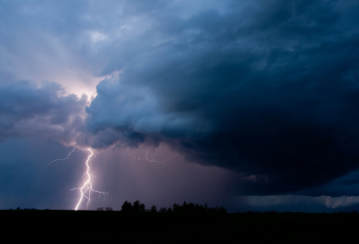News and Updates
How to safeguard your home against severe wind
It’s no secret that severe weather across Canada has become more frequent and, in many cases, more destructive. According to the Insurance Bureau of Canada, insured damage for severe weather events in Canada reached $1.9 billion in 2018 alone.1 This puts 2018 on record as experiencing the fourth-highest losses due to weather.
However, unlike previous years, the hefty bill of damages from 2018 can’t necessarily be attributed to any single environmental catastrophe – such as the Eastern Canada ice storm in 1998, the Calgary floods in 2013, or the Fort McMurray wildfire in 2016. Rather, Canadian homeowners in 2018 experienced a series of significant losses caused by several severe weather events across the country. Of these incidents, a significant amount of damage was caused by high winds and tornadoes.1
With instances of severe weather on the rise, it’s important to take the necessary preventative measures to safeguard yourself, your loved ones, and your home against future windstorms and tornadoes.
Here are a few suggestions of how to protect your home against severe wind:
1. Reinforce your garage door.
Strong, gusty winds can tear off an unsecured garage door and cause damage to anything stored inside – potentially even causing structural damage to your entire home. Consider contacting a professional to ensure your garage door is pressure rated and secure enough to withstand a windstorm.
2. Remove trees that are too close to your home.
While healthy, tall trees make a lovely addition to any home’s landscaping, you’ll want to ensure that any trees on your property sit far enough away from your home that they won’t cause damage if they were to fall. You should also watch for any dead trees or branches that can become missiles during a storm.
3. Inspect your roof.
Strong winds can easily tear off loose or lifting shingles. Not only will this cause damage to your roof, but loose shingles can easily become dangerous projectiles. Have your roof inspected every few years to check on the condition of your shingles. It’s also important to ensure that your home’s exterior cladding, such as siding and roofing, is rated for severe winds and should be replaced if it is not.
4. Secure overhangs, porches, ridge vents, and soffits.
Inspect your home and look for any loose connections between columns, porches, or overhangs. Make sure that your home’s ridge vents and soffits are all tightly connected to the roof. If you’re unsure, it’s best to contact a professional to identify the areas of your home that could act as weak points in the event of a windstorm.
5. Bolt double doors.
Double doors are more susceptible to wind damage than a single door and could potentially fail under wind pressure, potentially risking damage to your belongings or injuries to anyone inside. If you have a double door entry to your home, you should install a heavy-duty bolt or side bolts at the top and bottom of the inactive door to reinforce it against strong winds.
6. Keep windows and doors covered.
Consider purchasing high-quality shutters that can help to protect the windows of your home from any airborne debris, acting as an extra layer of protection. If a storm is in the forecast, check that all windows, shutters, and doors are closed and secured.
7. Anchor outdoor accessories and potential projectiles.
Patio furniture, children’s toys, bicycles, planters, and any other standalone items on your home’s property can become dangerous airborne projectiles in the event of a windstorm or tornado. Before winds start picking up, ensure all loose items are safely anchored or brought inside.
8. Stock your emergency kit.
You never know when a windstorm, tornado, or other severe weather event might blow in. It’s important to have an emergency kit stocked with necessary survival items located in a place that everyone in your home is aware of and can easily access. Your emergency kit, at a minimum, should include:
-
First-aid kit
-
Bottled water and non-perishable food
-
Candles, matches, and a lighter
-
Flashlight with extra batteries
-
List of emergency contacts
-
A battery-powered radio
-
Cash
-
Portable charger for your cell phone
9. Prepare for a power outage
In addition to having items like candles and flashlights on hand if the power goes out, it’s also important to prepare and protect your electronics and appliances. When power is restored, a voltage surge can significantly damage your electronics or even cause a fire.2 While the power is out, turn off big appliances like ovens and stoves and unplug other appliances and electronics like coffee pots and televisions. When the power is restored, you can plug your appliances and electronics back in.
Consider installing a home surge protector at your electrical panel, as this will prevent an electrical surge from entering your home. Smaller surge protectors can also be used for expensive electronics such as televisions and computers.
While most insurance policies do include coverage for damage caused by severe wind, taking the above precautions can prevent damage to your home, and keep you and your loved ones safe in the event of a dangerous windstorm.
If you have any questions about your home insurance policy, call 1-800-267-6847. If you are currently shopping for home insurance, contact your OTIP insurance broker at 1-866-561-5559 to discuss your home insurance options.
1. Insurance Bureau of Canada
2. CED Technologies





